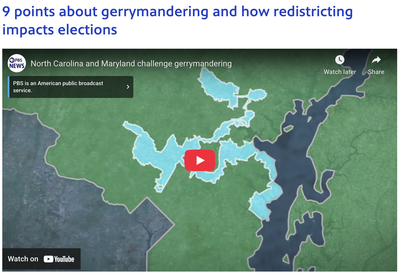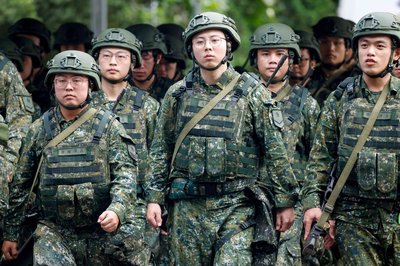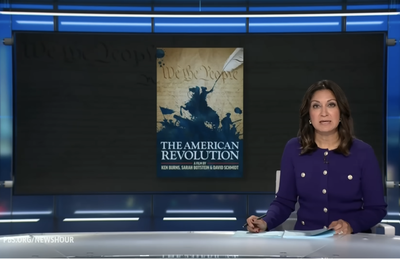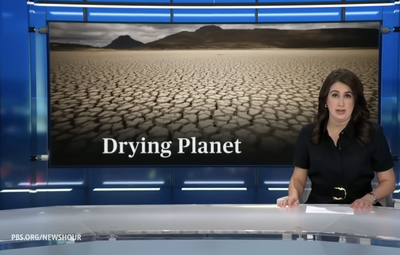NOTE: If you are short on time, watch the video and complete this See, Think, Wonder activity: What did you notice? What did the story make you think? What would you want to learn more about?
SUMMARY
The Supreme Court’s conservative majority signaled it could upend a central pillar of the 1965 Voting Rights Act. The question at the heart of arguments is whether lawmakers can use race as a factor when drawing congressional districts. Ali Rogin discussed the case's potential to reshape electoral maps with News Hour Supreme Court analyst and SCOTUSblog co-founder Amy Howe and David Wasserman.
View the transcript of the story.
News alternative: Check out recent segments from the NewsHour, and choose the story you’re most interested in watching. You can make a Google doc copy of discussion questions that work for any of the stories here.
WARM-UP QUESTIONS
- Who recently heard arguments related to redistricting and the Voting Rights Act of 1965?
- What are congressional districts? What is redistricting?
- What were the different arguments the Supreme Court heard?
- How does race factor into the arguments heard in the case?
- Why would politicians want to redraw electoral maps?
ESSENTIAL QUESTIONS
- Do you think how the government creates congressional districts in the U.S. needs to be revised? Why or why not?
- What are some potential solutions to gerrymandering?
Media literacy: Why do you think the News Hour interviewed David Wasserman of the Cook Political Report and Amy Howe, cofounder of SCOTUSblog?
WHAT STUDENTS CAN DO
Learn more how gerrymandering has affected elections in U.S. history with this PBS News Hour Classroom explainer:

Sign up to receive our weekly newsletter with Daily News Lessons and community events.
To provide feedback on News Hour Classroom's resources, including this lesson, click here.





